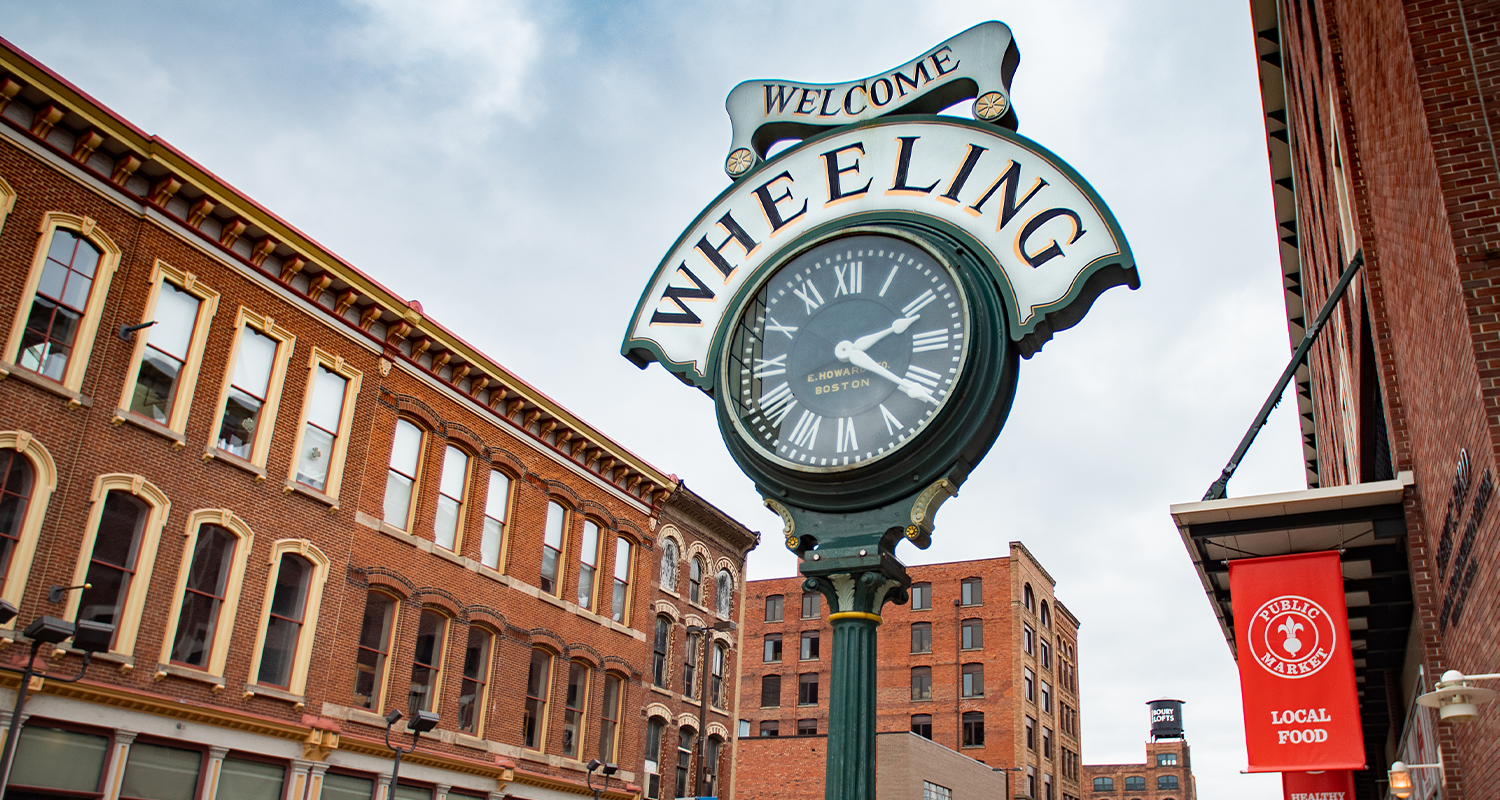Did you know that the Hancher Clock in Downtown Wheeling is one of only a handful of two-sided E.Howard & Co. street clocks left in the world? This clock has been ticking for more than 130 years, and it has a storied history that you wouldn’t know just by looking at it.
The clock was manufactured in Boston, Massachusetts in the late 1880’s and was purchased by I.G. Dillon, mentor and business partner of Charles Hancher. Soon thereafter, the clock was installed in front of the jewelry store, where it would remain for a bulk of its downtown existence. For many decades, Wheeling residents were known to set their personal watches to the Hancher Clock as they bustled about their daily lives until the onset of the digital age.
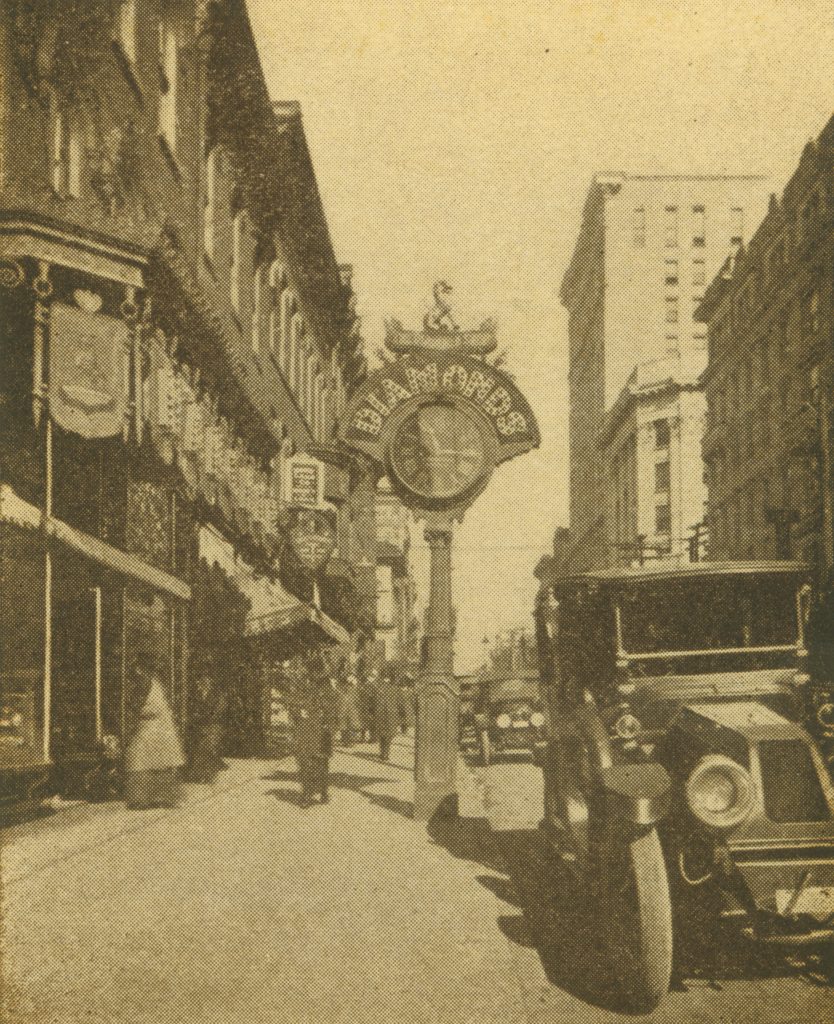
As far as clocks go, Wheeling’s Hancher Clock has seen its fair share of misfortunes through the years. It’s withstood collisions, storms, several relocations, and even a stampeding horse!
The first incident happened in 1892 – just two years after its installment. The Wheeling Daily Register of August 3, 1892 recounts the harrowing events of the day:
A Wheeling Bakery wagon, driven by Chris Mentzmeyer was sitting behind the bakery when some teenagers appeared, pushing a rickety wheelbarrow. One of the kids started banging on exposed piping at the rear of a nearby building with a metal bar.
Instantaneously, the two “stalwart horses” tasked with pulling the bakery wagon panicked and took off at full speed in the opposite direction from the racket. Despite Mentzmeyer’s attempts to halt the horses, they galloped and clopped at a high rate of speed, crossed the main street and headed directly toward the glass windows of the Hancher Jewelry Store.
Amazingly, the horses split the difference as they breached the sidewalk in front of the store. One horse on each side of the clock. The center-pole of the wagon struck the clock dead-center, knocking the 2,600 pound, 12 foot tall timekeeper to the sidewalk, narrowly missing the glass windows of the store.
The article goes on to say the clock was “badly demolished” and that the “general mechanism of the clock” was “badly disordered” but that “the clock will shortly be replaced.”
Fifty years later, the Hancher Clock, as it became known over the decades, would suffer another setback when it was blown over during a storm on March 8, 1942. Despite concerns about WWII raw materials restrictions, the clock was again able to be repaired.
Additional damage to the clock occurred in 1957, 1968 and 1969. Along the way, local businesses like Kalkreuth, the Bellaire Foundry, Scott Lumber, the City of Wheeling street department, Niedhardt Heating and Cooling, Pittsburgh Paint Company, Andy Hogan and Carmichaels Signs have all played a role in its resurgence from various disasters and restoration.
All of these calamities make it even more impressive that the iconic Hancher Clock is still standing today.
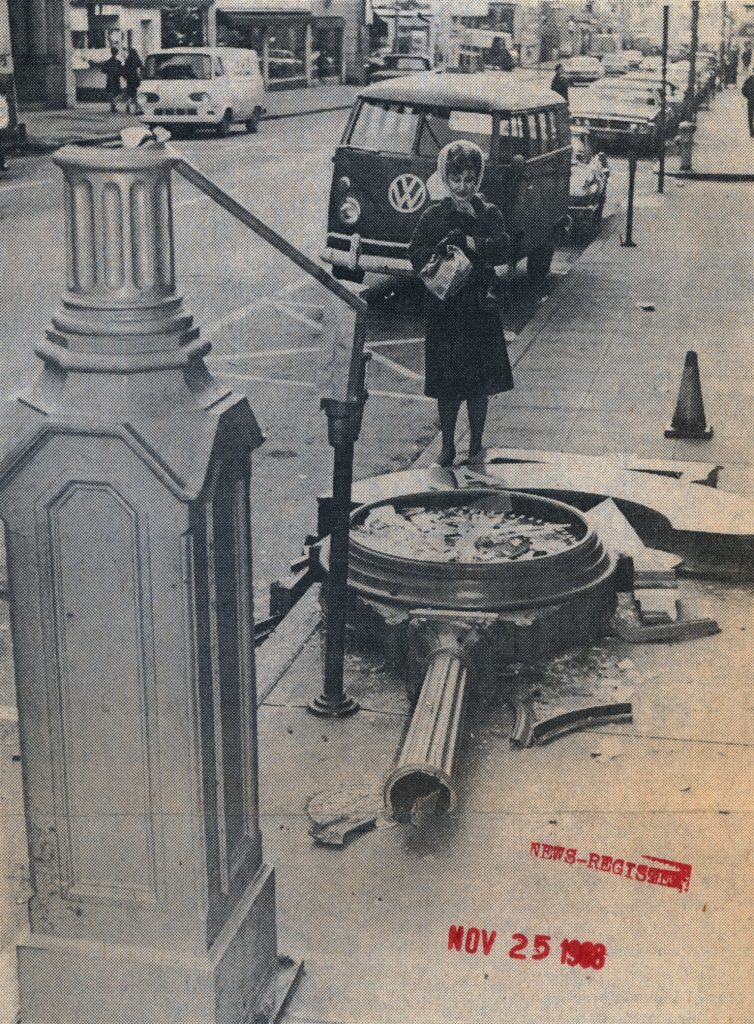
Wheeling’s Clock Keepers
The Hancher Clock has always been a beloved staple in Wheeling since the late 1800s, and for such a large object, it’s switched hands quite a bit through the years. Ray Young, Bank One, Anthony Zambito, Sr., Charles Baum, Rogers Jewelry Store, Security National Bank and Trust Company and Chase Bank have all been listed as owners until it found its forever home with the City of Wheeling and Wheeling National Heritage Area Corporation in 1998.
While the ownership for the clock has changed several times throughout the years, only a handful of people have been responsible for its maintenance.
The Hancher Clock is “weight-driven”, meaning that it’s powered by the gravitational pull of weights located inside the clock. This also means that there is no electricity connected to it.
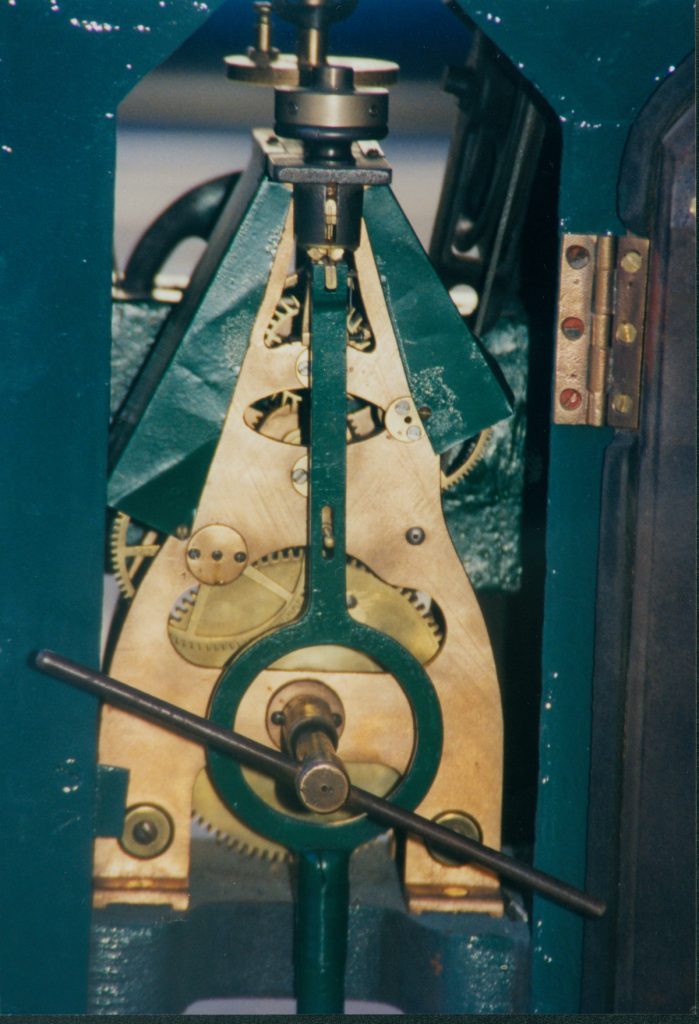
Inside is a huge lead weight, chains, cables, planetary gears, the repair schedule and the crank – also known as the key. The clock is ‘wound’ by “the keepers of the key,” people like Michael Biela, a marketing assistant at the Wheeling-Ohio County Convention & Visitors Bureau where the clock has stood since the late 1990’s following an extensive refurbishment.
Biela says it takes about 20 seconds to wind and it must be done at least once every five days.
“It’s just our way of helping out,” said Biela. A full winding of the clock by Biela and others at the city’s intermodal facility can only achieve a run-time of five days and 23 hours, but it wasn’t always this way.
While Biela and the CVB have helped keep the clock ticking, Glenn White has been the mechanical wizard of the Hancher Clock for over 30 years. He became involved with the clock through a friend who owned it for a brief period and then sold it to Security National Bank. “At that point I became involved because they needed someone to take care of it and there was no one left.”
He currently runs White’s Watch and Clock inside Antiques on the Main in Centre Market.
“When the clock was originally put in up at the Hancher Jewelry Store there was a hole in the sidewalk for the weight to drop its entire length so it would run for eight days,” said White.
“When it was moved to two other locations, they put it at ground level and will only run to the five day schedule.”
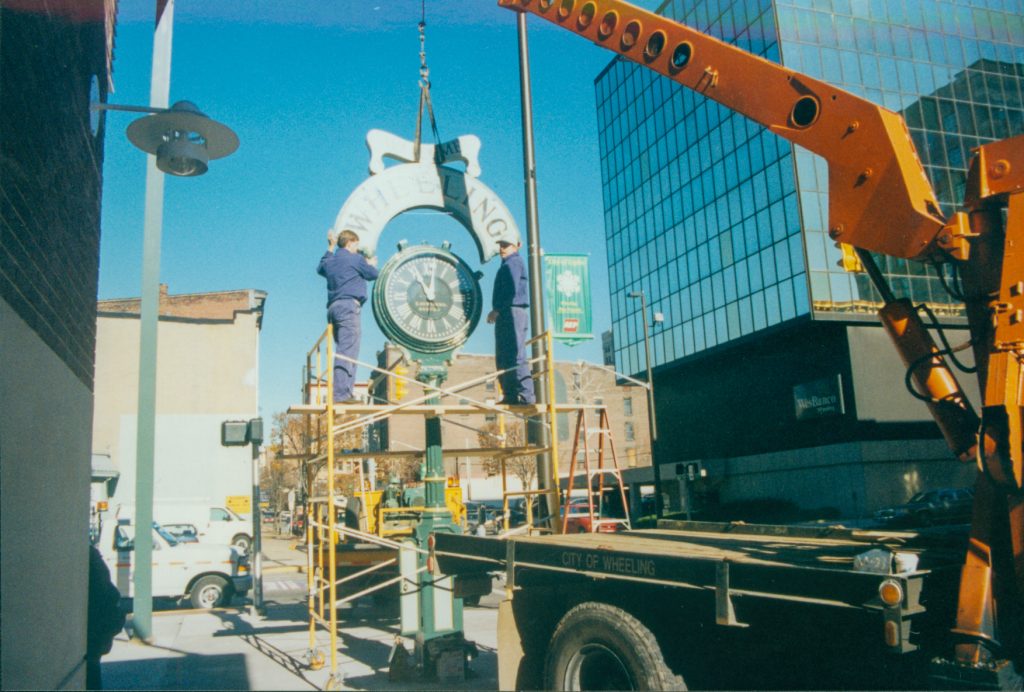
White grew up tinkering with watches and clocks in his native Corbin, Kentucky. He’s really into researching his genealogy and believes his penchant for this type of work may have a familial explanation.
“I tell everybody it’s genetic. I was always taking them apart and putting them back together for as long as I can remember. My grandfather worked on clocks but I never met the guy. He died long before I was born.”
He made his way to Wheeling after graduating from the University of Kentucky and being drafted for the Vietnam war, although his unit was never called up. “When I finished college as a biology major there were no jobs to be had down there. So I took a job up in this area and eventually began working for AEP in 1975. “I started as a chemist and eventually became a stack engineer and retired in 2005.”
White talks of the heyday of American clock and watch manufacturing and its precipitous decline in the last 70 years. “We taught the world! We were making clocks so cheap in the 1840’s we were exporting them to England. The same thing happened with watches. The Waltham Watch Company in 1857 figured out how to make an interchangeable watch. If you brought your watch in for repairs, they had pre-cut gears they could replace in it. Up until that time, each watch was individually made by one watchmaker. They called it the Model 1857 and we just buried the Swiss watchmakers. Our watches were superior until the 1950’s. We even had Ithaca – a gun maker that made clocks. But now, it’s all overseas now.”
And just like the bygone era of American timekeeping excellence, White’s not sure what will happen with the Hancher Clock once he’s gone. He’s hopeful that there’s a local timekeeping enthusiast who can help continue his work so that the Wheeling’s Hancher Clock continues to tick for decades to come.
• Rich Wooding has been a Correctional Officer with the State of Ohio/Belmont Correctional Institution for more than 25 years. He received a Bachelor’s Degree in Mass Communication and Journalism with a minor in Philosophy from Lock Haven University of Pennsylvania in 1993. He is a U.S. Navy veteran, serving from 1985-89.
References
Quinn, Katie. “The Hancher Clock,” March 10, 2018. The Hancher Clock. https://historic-wheeling.org/wiki/The_Hancher_Clock
Wheeling Daily Register, August 3 1892
Wheeling Intelligencer, June 8 1942


